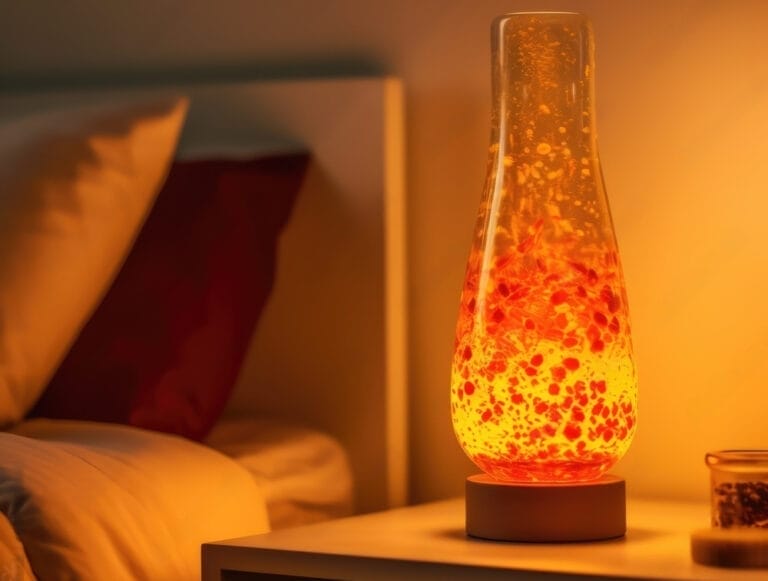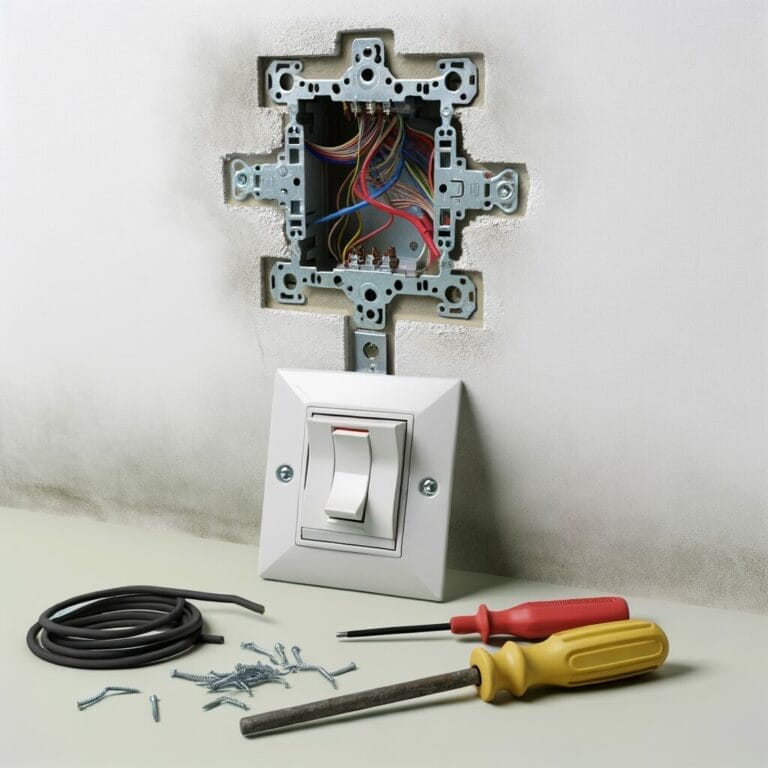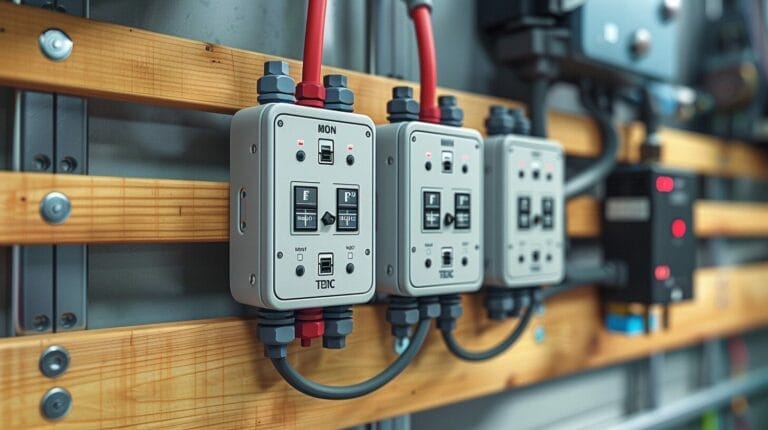How Many Lumens in a 100 Watt Bulb: An Illuminating Guide
Much like the legendary Thomas Edison, who brought light to millions of homes with his invention of the electric light bulb, you’re on a quest for illumination. Only this time, we’re not talking about inventing the light bulb but understanding the lumens in a 100-watt bulb.
You’re about to step into the fascinating world of lighting, where you’ll unravel the mystery behind lumens and watts, their interplay, and how they affect your lighting choices.
Are you ready to have your perspective illuminated?
Key Takeaways
- Lumens measure the total quantity of visible light emitted by a light source per second, while watts indicate the rate of energy conversion or transfer.
- LED bulbs produce more lumens per watt, making them more energy-efficient compared to traditional incandescent bulbs.
- LED bulbs can produce the same amount of lumens as a 100 watt incandescent bulb but use only around 20 watts of energy, resulting in significant energy savings.
- Understanding the conversion between lumens and watts is important for choosing cost-effective and energy-efficient lighting options, as well as determining the appropriate level of brightness for different spaces.
Introduction: Understanding the Concept of Lumens and Watts in Lighting

Let’s delve into the enlightening world of lumens and watts, starting with their definitions in the context of lighting.
- Lumen: In simple terms, a lumen represents the level of brightness of a light source. It’s the unit measuring the total quantity of visible light emitted by a source per second.
- Watts: A watt is the power unit, signifying the rate of energy conversion or transfer.
So, when you’re looking for an equivalent to your 100-watt incandescent bulb, checking the lumens, not watts, will lead you to your desired level of brightness.
How Many Lumens in a 100 Watt Bulb: An Exploration

Diving into the heart of the matter, do you know how many lumens a 100 watt incandescent bulb emits? Let’s explore.
A traditional 100 watt bulb produces around 1600 lumens. But lumens isn’t a watt. Note that lumens measure brightness, while watts measure the energy a bulb consumes. This is particularly relevant when considering LED bulbs over traditional bulbs. So when selecting light bulbs, you want to focus more on lumens than watts.
Now, let’s compare this to LED light bulbs. An LED bulb can produce the same 1600 lumens as a 100 watt incandescent, but it only uses roughly 20 watts of energy. That’s an 80% energy saving! It’s the kind of innovation that not only lights up your space but also lightens your energy bill.
But it’s not all about the lumens and watts. There’s also the quality of light to consider. Incandescent bulbs emit a warm, yellowish light, while LED light bulbs can emit a range of colors from warm to cool white. This versatility makes LEDs the go-to choice for different lighting moods and tasks.
The Maximum Energy Efficiency: Comparing Different Light Bulbs Types
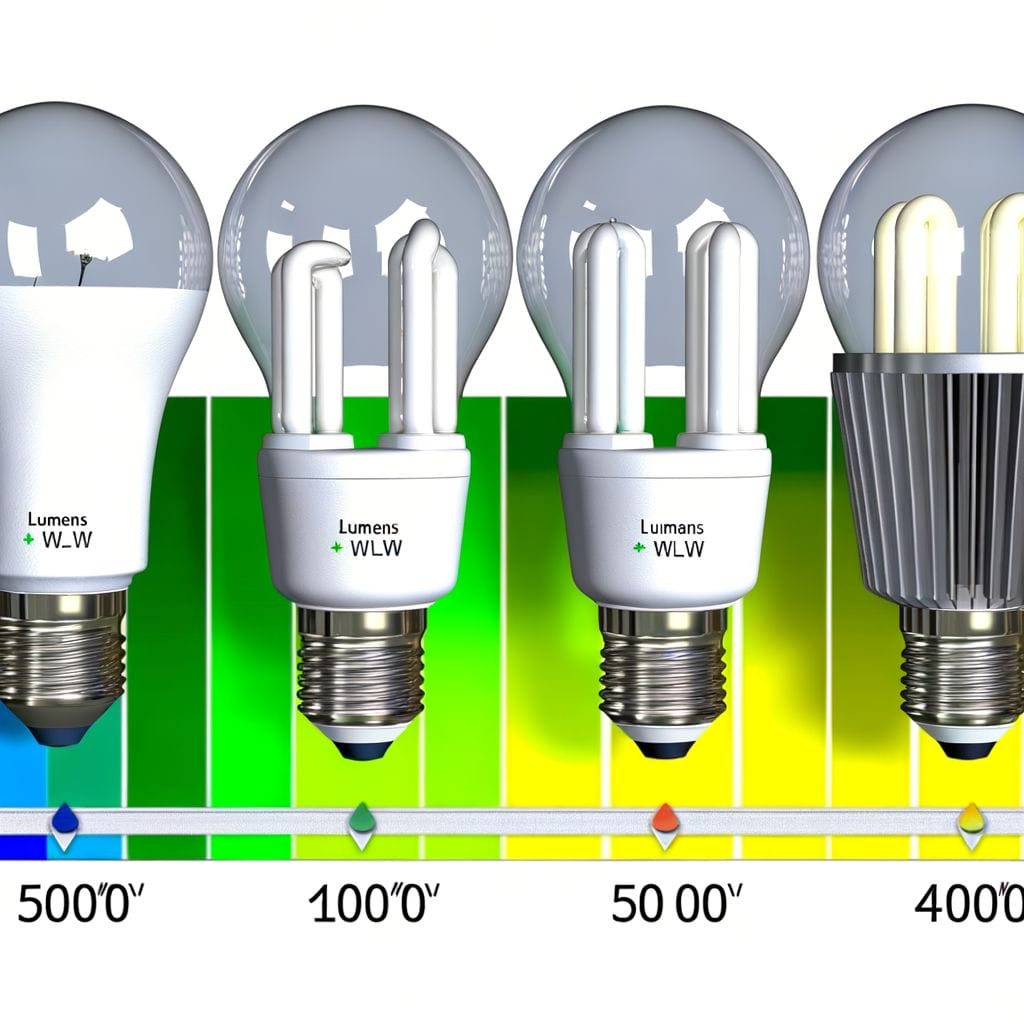
When it comes to maximizing energy efficiency in lighting, comparing the lumen per watt ratio among different types of bulbs, such as incandescent, LED, CFL, and Halogen, can show you where real savings lie.
Let’s start with the classic tungsten incandescent bulb. This old-school bulb converts a mere 10% of its energy into light; the rest is lost as heat. That means, a 100-watt incandescent bulb only gives you about 1,600 lumens.
On the other hand, LED technology is far superior. An LED bulb can provide the same amount of light (lumens) with significantly less power consumption. So, how many lumens is a 100-watt LED bulb? Astonishingly, it’s about 9,000 lumens. That’s a huge leap in efficiency!
CFL and Halogen bulbs also outperform incandescent bulbs, but they can’t match the efficiency of LED bulbs.
Now, consider these facts:
- LED bulbs are 80-90% more energy efficient than incandescent bulbs.
- Switching to LED can reduce your energy consumption by up to 85%.
- LED bulbs last 25 times longer than incandescent bulbs.
Quite simply, with LED technology, you’re getting more light per watt, which means lower power consumption and significant savings on your energy bill. So, when you’re choosing a bulb, don’t just ask how many lumens is a 100-watt bulb. Ask how efficiently those lumens are produced. Because the best bulb for your buck, by far, is LED.
Conversion Between Lumens and Watts: A User-Friendly Chart

To fully grasp the advantage of LED bulbs in terms of efficiency, it’s essential to understand the conversion between lumens and watts, and a user-friendly chart can make this task significantly easier. When you convert lumens to watts, you’re essentially translating the amount of light produced by a bulb (lumens) into the amount of power it consumes (watts).
This conversion is crucial to identifying the efficiency of your light bulbs and finding more energy-saving alternatives.
| Lumens | Incandescent (Watts) | LED (Watts) |
|---|---|---|
| 400 | 40 | 5-7 |
| 800 | 60 | 8-12 |
| 1600 | 100 | 16-20 |
| 2600 | 150 | 25-28 |
| 4000 | 250 | 30-35 |
This chart provides a quick reference for converting lumens to watts for both traditional incandescent bulbs and LED bulbs. It highlights the significant energy savings that can be achieved by switching to LED bulbs, as they can produce the same amount of light with much lower power consumption. Use this chart to make informed decisions when choosing lighting options for a more sustainable and cost-effective solution.
Making Smart Choices: Considering Many Lumens When Purchasing Light Bulbs
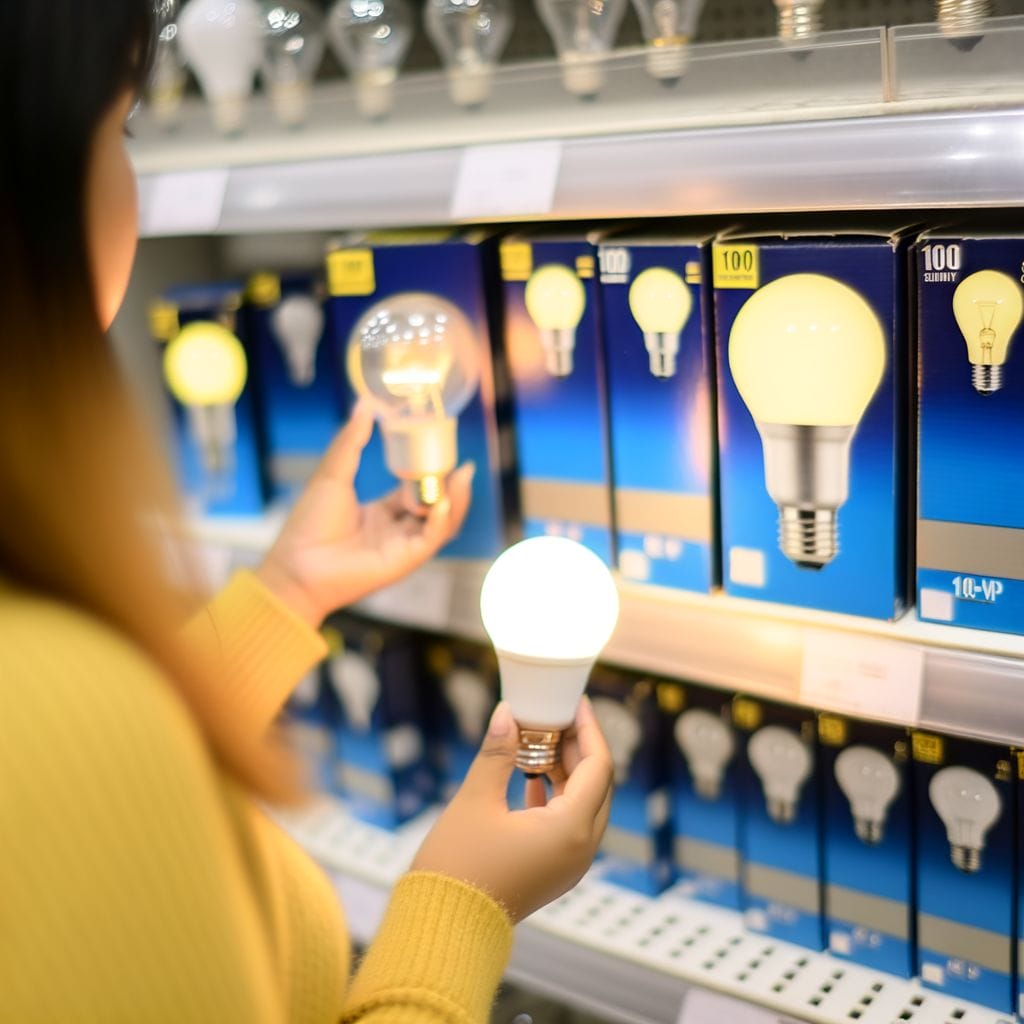
Armed with the knowledge of lumens-to-watts conversion, you’re better prepared to make informed decisions when purchasing light bulbs, particularly with regard to lumens. Now, you have the power to make smart choices. This illuminating guide serves as your compass to navigate the lighting landscape, pushing beyond the traditional 100 watt bulb to consider lumens as a key deciding factor.
When purchasing light bulbs, remember these three points:
- The Power of Lumens: Lumens measure the total amount of visible light from a bulb. The higher the lumen count, the brighter the light. It’s not about wattage anymore; it’s about the brightness that suits your space.
- Matching Needs: Consider your space and its lighting needs. Does your reading room need a 1600 lumens (equivalent to 100 watt bulb) or will a cozy 800 lumens do? Your choice can dramatically affect the ambiance of your space.
- Energy Efficiency: Energy-efficient bulbs such as LEDs provide more lumens per watt, saving you money on electricity bills while reducing your carbon footprint. A win-win for you and the planet!
This shift in perspective, from watts to lumens, is a gateway to innovation in lighting technology. It’s about harnessing the power of knowledge to make smart, sustainable choices. By understanding the language of lumens, you’re not just purchasing light bulbs; you’re shaping the future of efficient and effective lighting.
Conclusion
So, you’ve explored the intriguing world of lumens in a 100-watt bulb. Now, you’re equipped to make informed lighting decisions, considering lumens, watts, and energy efficiency, with a particular note on LED technology.
You’ve discovered the benefits of LED lighting and the vital role lumens play. Remember, LED Lights Direct is always here for further guidance.
You’re not just brighter, you’re a luminary. Keep shedding light on your world and make it shine the way you want it to!
Frequently Asked Questions
What is the wattage of a typical 100 watt light bulb?
The wattage of a 100 watt light bulb refers to the amount of power it consumes.
How many lumens does a 100 watt light bulb typically produce?
A typical 100 watt incandescent light bulb typically produces around 1600-1700 lumens.
How does the luminous output of a 100 watt incandescent light bulb compare with other bulbs?
The 100 watt incandescent light bulb generally produces more lumens compared to other types of bulbs, such as LED or CFL.
Can I replace a 100 watt incandescent light bulb with a lower wattage bulb to save energy?
Yes, you can replace a 100 watt incandescent light bulb with a lower wattage bulb, such as a 60 watt equivalent LED, to save energy without compromising the luminous output.
What are the average lifespan and cost of a 100 watt incandescent light bulb?
A typical 100 watt incandescent light bulb has a lifespan of around 1,000 hours and is relatively inexpensive to purchase compared to LED or other energy-efficient bulbs.



